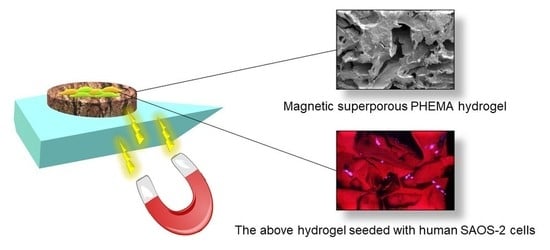Magnetic Superporous Poly(2-hydroxyethyl methacrylate) Hydrogel Scaffolds for Bone Tissue Engineering
Abstract
Share and Cite
Zasońska, B.A.; Brož, A.; Šlouf, M.; Hodan, J.; Petrovský, E.; Hlídková, H.; Horák, D. Magnetic Superporous Poly(2-hydroxyethyl methacrylate) Hydrogel Scaffolds for Bone Tissue Engineering. Polymers 2021, 13, 1871. https://doi.org/10.3390/polym13111871
Zasońska BA, Brož A, Šlouf M, Hodan J, Petrovský E, Hlídková H, Horák D. Magnetic Superporous Poly(2-hydroxyethyl methacrylate) Hydrogel Scaffolds for Bone Tissue Engineering. Polymers. 2021; 13(11):1871. https://doi.org/10.3390/polym13111871
Chicago/Turabian StyleZasońska, Beata A., Antonín Brož, Miroslav Šlouf, Jiří Hodan, Eduard Petrovský, Helena Hlídková, and Daniel Horák. 2021. "Magnetic Superporous Poly(2-hydroxyethyl methacrylate) Hydrogel Scaffolds for Bone Tissue Engineering" Polymers 13, no. 11: 1871. https://doi.org/10.3390/polym13111871
APA StyleZasońska, B. A., Brož, A., Šlouf, M., Hodan, J., Petrovský, E., Hlídková, H., & Horák, D. (2021). Magnetic Superporous Poly(2-hydroxyethyl methacrylate) Hydrogel Scaffolds for Bone Tissue Engineering. Polymers, 13(11), 1871. https://doi.org/10.3390/polym13111871







